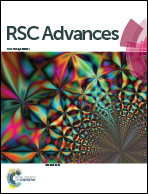Recent advances in S–S bond formation
Abstract
Organic compounds possessing S–S bonds, often called disulfides or more specifically disulfanes, have been widely applied in various fields ranging from biochemistry to different industrially important polymers, used as synthetic intermediates in other fine chemicals such as catenanes, rotaxanes, micelles, and also in areas like peptidomimetics, self-assembled monolayers (SAMs) etc. Such versatile applications have steered the development of several new methods for the preparation of organic disulfides. The present review has attempted to comprehensively summarize recent advances in the process of S–S bond formation, highlighting plausible mechanistic considerations, scope and limitations.


 Please wait while we load your content...
Please wait while we load your content...